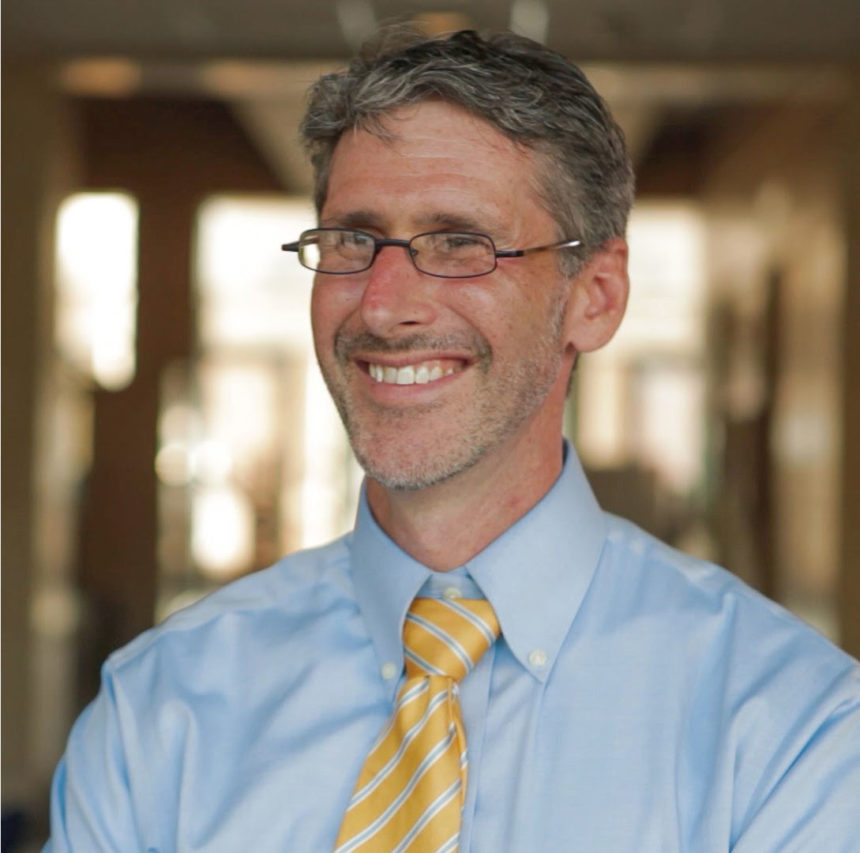Berkoff’s work is centered on keeping his patients healthy and active while providing treatment options that hopefully avoid the need for surgery. Many of his patients are active athletes who have developed pain in their tendons.
Since early June, Berkoff has been utilizing an Ultrasound Tissue Characterization (UTC) Tracker to get a clearer picture of patients’ tendons in his clinic. Though the device is in use in Europe, UNC is the first medical center In the United States to acquire and use the technology.
It works like a traditional ultrasound machine, but provides orthopaedists like Berkoff with a color-coded image that shows problem areas in more detail.
“If you see a dark spot on a scan you know that’s not normal but aren’t really able to clearly tell, for example, if it’s a tear or chronic tendinopathy.”
“With traditional ultrasound you get a standard light and dark grayscale image,” Berkoff said. “If you see a dark spot on a scan you know that’s not normal but aren’t really able to clearly tell, for example, if it’s a tear or chronic tendinopathy.”
The detail provided by this technology – which Berkoff said is the best available – will provide a clearer picture for a more accurate diagnosis.
“You are able to look at the image and say, for example, that 80 percent of the tendon is healthy, 15 percent is reversibly injured and five percent is gone, just a bad tendon,” Berkoff said. “We are able to get down to the fiber level in terms of detail.”
Regular scans can also help guide rehabilitation.
“If you’re following a rehab plan then I can hopefully use these scans to show improvements and adjust a rehab plan based on what we see,” Berkoff said.
Berkoff is currently using the device to scan the Achilles and Patellar tendons, but could soon expand its usage. The device is small and incredibly portable. The pad is connected to a small, battery-operated, hand-held tracker. It plugs into a laptop where the scan appears. Berkoff said it takes less than one minute to produce an image.
Its ease of use is one reason it could be a valuable research tool, allowing Berkoff and others to scan many healthy and injured tendons to hopefully learn more about the causes of chronic tendinopathy, which is not well understood.
“Using this machine, we could potentially look at what’s going wrong and if there are any preconditions that we could identify.”
“We really don’t have a clear idea of why we get it and why it hurts,” Berkoff said. “Using this machine, we could potentially look at what’s going wrong and if there are any preconditions that we could identify.”
In Europe, Berkoff said many professional soccer teams – including F.C. Barcelona – use the machine to make certain their athletes are performing at their peak. Before the UTC arrived in Chapel Hill, Berkoff traveled to Europe, training with the machine at the University of Central London.
He plans to put those lessons into practice for his patients as well as Tar Heel athletes.
“It has a lot of applications in terms of offseason training, pre-hab and just reducing the number of injuries that are a result of heavy workload,” Berkoff said. “We may see in a scan that an athlete has a tendon that is at risk and so we maybe don’t have them do a heavy plyometric workout. This can definitely be used to prevent or reduce some overuse injuries.”

